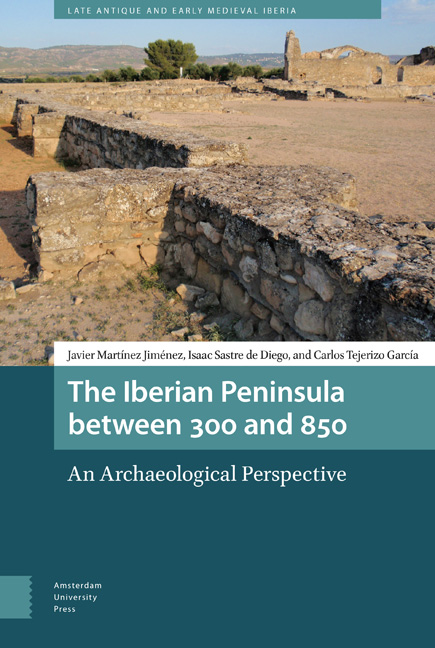Book contents
- Frontmatter
- Contents
- List of Figures
- Acknowledgements
- Preliminary notes
- Preface
- Introduction: An archaeological perspective on the Iberian peninsula between Rome and the Middle Ages
- Part 1 The Late Roman period
- Part 2 The post-Roman period
- Part 3 The Early Middle Ages
- Appendix 1 Site reference table
- Appendix 2 Maps
- Appendix 3 Lists of rulers
- Abbreviations
- Bibliography
- Index
3 - The economy and the rural world in the late Empire
Published online by Cambridge University Press: 10 December 2020
- Frontmatter
- Contents
- List of Figures
- Acknowledgements
- Preliminary notes
- Preface
- Introduction: An archaeological perspective on the Iberian peninsula between Rome and the Middle Ages
- Part 1 The Late Roman period
- Part 2 The post-Roman period
- Part 3 The Early Middle Ages
- Appendix 1 Site reference table
- Appendix 2 Maps
- Appendix 3 Lists of rulers
- Abbreviations
- Bibliography
- Index
Summary
The late Roman administrative system, the civitas, was based on the centrality of the city (urbs), around which a rural hinterland, the territorium was articulated. This territory could be quite broad, and included a number of minor settlements and productive centres, such as villas. However, just as towns changed, so too did the countryside, and the transformations of the late Roman centuries show an intermediate point between the Roman and post-Roman patterns. Despite this, it should be noted that there was not an abrupt rupture with earlier Roman traditions, but rather a slow adaptation to the new political circumstances. This rupture only occurred after the Roman system collapsed, during and after the fifth century.
The exploitation of the landscape was the main economic activity in Antiquity, mostly through agriculture but, particularly in Hispania, also through mining. The profit extracted from the countryside was funnelled towards the urban centres, from which it was turned into cash (either through trade or taxation), and thus benefited the economy. In this way, and as it can be inferred from late Roman Hispanic examples, the territory was organized in to three different levels, defined by the way the land was exploited and its main purpose.
In the first level we find suburban and peri-urban agricultural and other forms of production sites. In the previous chapter we have described how harbour suburbs developed around towns throughout the fourth and fifth centuries, but these are just a type of suburban economic centre. Suburban and peri-urban economic activities have to be understood as those production sites within the immediate periphery of an urban settlement; i.e., those that could be reached within a day's travel, and that therefore can be seen as direct suppliers of basic goods for their urban populations.
The second level includes those sites devoted to large-scale production aimed at trade. These were mostly the larger agrarian exploitations, normally linked to large villas, with large tracks of monoculture used for grain, vines or olives, but also fish processing factories and large pottery kilns. These sites tended to be, but were not exclusively, located further away from urban nuclei, but still with strong communication links through roads, harbours, and rivers.
- Type
- Chapter
- Information
- The Iberian Peninsula between 300 and 850An Archaeological Perspective, pp. 101 - 124Publisher: Amsterdam University PressPrint publication year: 2018



